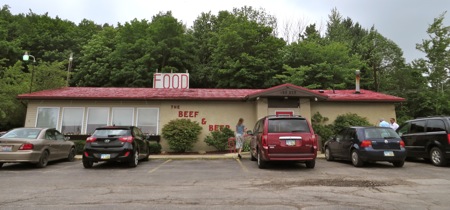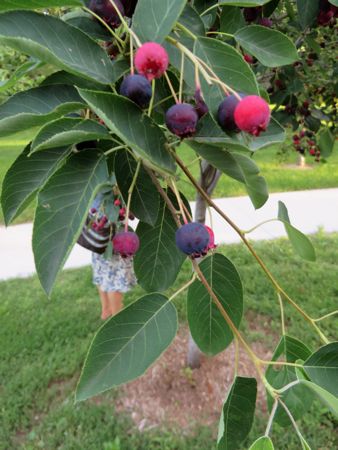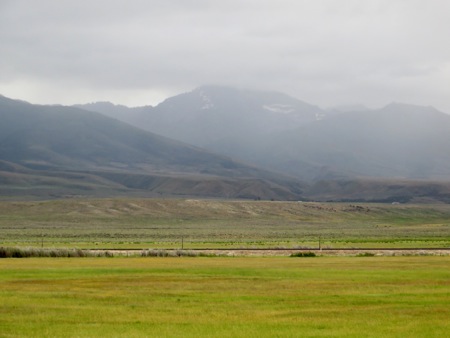We stopped for an early lunch just inside the Ohio border at a truck stop. But the truck stop only had one of those miserable fast food joints, which cannot even be dignified with the title of restaurant. But we looked across the road from the truck stop, and there perched on the top of a little hill was a sign proclaiming in big red letters FOOD. Another, smaller, sign, read: The Beef and Beer Popular Sandwiches and Famous Beers. The decision was made easily, by consensus, and almost instantaneously: we went to The Beef and Beer. The food was a little greasy, but good. The waitress gave me some sauce to go with my sweet potato waffle fries, saying, “There’s you sauce, it’s nummy.” It was indeed nummy: some kind of cinnamon sugar sauce, but not too sweet, a perfect match for the sweet potato fries.

Soon we were on the New York Thruway, which is not a particularly pleasant road to drive. The goal of the New York Thruway is to get as many vehicles as possible to their destinations without letting them off the highway, and while charging them substantial tolls. We stopped at one of the service areas near Rochester. It wasn’t too terrible. It had the usual crummy fast food, but it also had a player piano that played constantly. This rest area was crowded, presumably with people coming back from or heading off to summer destinations for the week of July 4. It wasn’t too bad a service area, but I was glad to get back in our car and start driving.
There is a point on the New York Thruway where the road has to pass through a gap in the hills between the Adirondack and Catskill mountains. Here the Mohawk River, enlarged to carry the traffic of the Erie Canal, the railroad that used to be the New York Central, the interstate highway, and a smaller state highway all come close together to pass through the tree-clad hills that rise dramatically and steeply up on either side. It’s a dramatic stretch of road, and I’d been looking forward to seeing it again, but as we got closer it started raining, and by the time we got there the rain was heavy enough that traffic had slowed down to 55 miles an hour; the heavy rain obscured the view, and I had keep my eyes on the road in any case.
We arrived in Albany at a quarter to nine. After we checked into our small downtown hotel, we went for a walk down Lark Street. A sign proclaimed something to the effect of “Welcome to Lark Street, a village in the city”; I can’t remember the exact wording. We saw lots of young hipsters walking the streets and sitting outside small bars and restaurants, all of them dressed much alike, urban chic clothing carefully chosen so as not to look too carefully chosen. A flashing electronic traffic sign parked by the side of the road informed motorists and motorcyclists that a city ordinance prohibited excessively loud music coming from vehicles. About five seconds after I saw this sign, a car passed by vibrating and pulsing with excessively loud music. I had wondered how they could enforce such a city ordinance.
We didn’t walk around much. My nerves were jangled with too much driving. I bought a copy of the Sunday edition of the New York Times, and I now propose to read it until the excessively gray prose quiets my nerves and puts me to sleep; this will take about five minutes; or ten minutes, if I start by reading the book review section.




